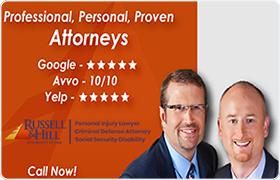Quincy White Collar Crime Lawyer, Washington, page 2
Sponsored Law Firm
-
 x
x

Click For More Info:
-
Russell & Hill, PLLC
1212 North Washington St. Suite 132 Spokane, WA 99201» view mapCriminal Defense Law Professional, Personal, Proven
You have questions, and we have answers. Here at Russell & Hill, PLLC, we know how to obtain the most favorable outcome for your particular circumstances.
800-928-5340
Not enough matches for Quincy White Collar Crime lawyer.
Below are all Quincy Criminal lawyers.
Douglas G Anderson
Power of Attorney, Federal, Family Law, Criminal
Status: In Good Standing Licensed: 34 Years
 James Hill Spokane, WA
James Hill Spokane, WA Practice AreasExpertise
Practice AreasExpertise
